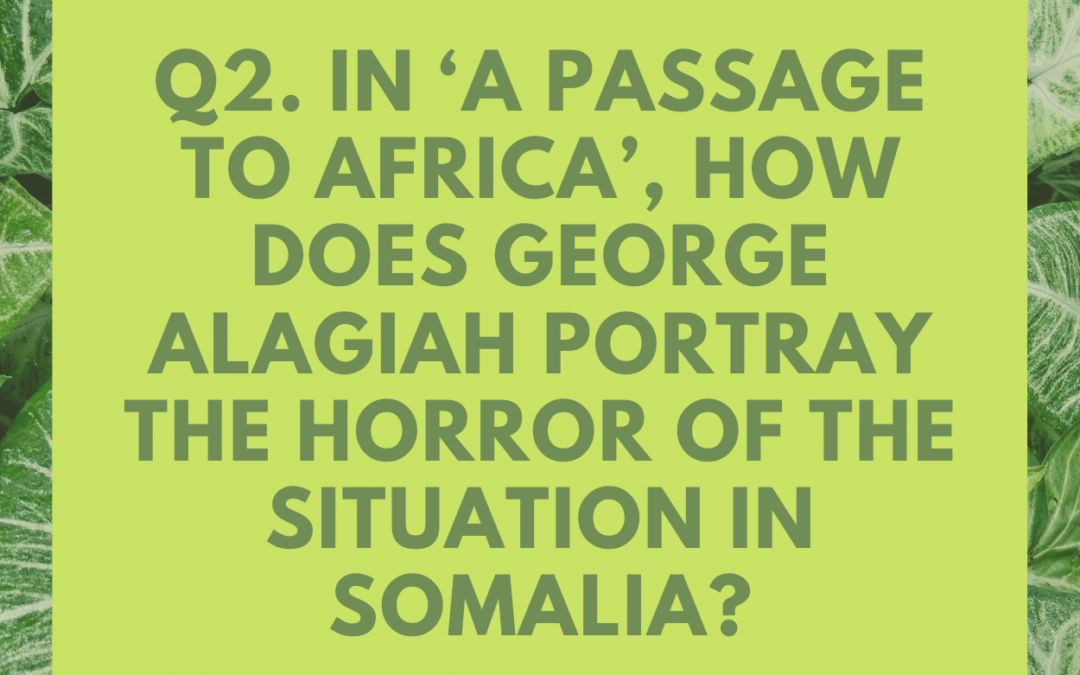Edexcel English IGCSE: A Passage to Africa by George Alagiah
Q2. In ‘A Passage to Africa’, how does George Alagiah portray the horror of the situation in Somalia?
In your answer, consider:
- how the people in the poem are described;
- the writer’s feelings about the situation;
- the use of language.
Edexcel English IGCSE Model Essay by an Expert
This passage provides a frank portrayal of the horrific circumstances endured by the Somalian people during the war. Through Alagiah’s graphic descriptions of suffering, and his own reactions to the scenes, the reader gains an insight into the realities of the situation.
The terrible circumstances of the suffering people in this passage are described with moving honesty. Alagiah first informs the reader of the scale of the suffering: he saw “a thousand hungry, scared and betrayed faces”. This triple adjective structure portrays the multiple ways in which the Somalians are suffering. There are children lying on a “dirt floor” while their mother searches for “edible roots”. This description emphasises the differences between the lives of these people and our own. In another terrible situation, an injured old woman has been “abandoned by relations”, which initially evokes anger in the reader. However, we then learn that they were “too weak” to carry her on their search for food; this highlights the complexity of the situation, and the agonising decisions people have had to make – this family were so desperate for food that they had to leave a relative behind to die.
Alagiah also describes the people’s physical suffering in so much detail that the reader almost recoils in horror. The description of the old woman’s injury is grotesque. Graphic adjectives are used to add vivid, horrific detail to the description: for example, “festering wound”, “shattered leg” and “putrid air”. In the description of her injured leg, a disturbing contrast is created between the soft, playful imagery and the terrible thing it describes: the leg had the “gentle V-shape of a boomerang”. He also appeals to the reader’s senses to reflect the overwhelming horror of these scenes: “the smell of decaying flesh”, “to hear and smell the excretion of fluids” and “held the clammy palm”. Admitting to his own revulsion at such scenes, Alagiah describes in horrifying detail the physical impact of injury, hunger and disease on the human body.
The experience with the smiling man contributes to the horror of the situation by reminding Alagiah and the reader of the injustice of our relative privilege. The man’s smile is apologetic, which causes Alagiah discomfort because he feels that he is the one who should be offering an apology, because of his privileged circumstances. The smile is “the kind of smile you might give if you felt you had done something wrong”. The use of the second person pronoun reminds the reader of the essential similarity between themselves and the suffering people: their shared humanity. This brings the distant suffering somewhat closer to home.
By reminding the reader of what they have in common with the Somalians, whilst also highlighting the vast differences in their circumstances, Alagiah portrays the true horror of the situation in Somalia.




